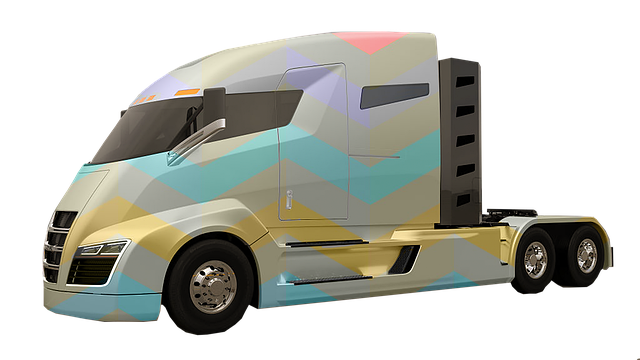Registering a car in California is a straightforward process, but understanding the requirements can save you time and hassle. This comprehensive guide will walk you through each step, from gathering essential documents to visiting the DMV. We’ll also explore the benefits of using a DMV VIN verifier and provide post-registration follow-up steps. Make sure you’re prepared with all necessary paperwork for a smooth car registration experience in California.
- Understanding the California Vehicle Registration Process
- Gather Required Documents for Car Registration
- Visiting the DMV: Step-by-Step Registration Guide
- Using a DMV VIN Verifier: Benefits and Process
- Post-Registration: Important Follow-Up Steps and Considerations
Understanding the California Vehicle Registration Process

Understanding the California Vehicle Registration Process
In California, registering a car involves several key steps that ensure vehicles on the road meet safety and environmental standards. The process typically starts with gathering essential documents, including proof of ownership, vehicle identification number (VIN) verifier results from a trusted source like a mobile VIN verifier or dmv VIN verifier, and other necessary paperwork. A mobile VIN verification can be a convenient option for many, allowing for an inspection on-site to ensure all components meet California’s requirements.
Once these documents are in order, the next step involves visiting a local Department of Motor Vehicles (DMV) office. There, you’ll need to present your papers and undergo a vehicle inspection that includes checking emissions, lights, brakes, and other critical systems. After passing the inspection, the DMV will issue a registration certificate, officially registering your car for road use in California. A vin inspection is crucial to ensure compliance, and utilizing a mobile VIN verifier can streamline this process, making it more efficient and less time-consuming.
Gather Required Documents for Car Registration

Before heading to the California DMV (Department of Motor Vehicles) for registration, ensure you have all the necessary documents. The process is streamlined with the help of a DMV VIN verifier, which allows you to quickly validate your vehicle’s information online or via a mobile app. This tool checks the Vehicle Identification Number (VIN), confirming its accuracy and history, an essential step in preventing fraud.
Gathering these documents includes your car’s registration certificate from the previous state (if applicable), proof of insurance, vehicle title, and identification like a driver’s license or passport. For vehicles under 25 years old, you may need a completed odometer reading report. A mobile VIN verification service can assist in obtaining these readings remotely, making the process more convenient. Additionally, be prepared to pay the registration fees, which vary based on your vehicle type and age.
Visiting the DMV: Step-by-Step Registration Guide

Visiting the DMV for car registration can be a straightforward process with proper preparation. Start by gathering all required documents, including your vehicle’s title, proof of insurance, and valid identification like a driver’s license. Park in a designated spot at your local California Department of Motor Vehicles (DMV) office, ensuring you’re ready to complete the transaction efficiently.
Upon entering, locate the registration counter and approach a DMV representative. They will guide you through the steps, which typically include verifying your vehicle’s identification number (VIN) using their systems or a dmv vin verifier tool. For convenience, many services offer mobile VIN verification, allowing you to check your car’s history remotely before visiting the DMV. After confirming the details, pay the registration fees and receive your new registration documents.
Using a DMV VIN Verifier: Benefits and Process

Using a DMV VIN Verifier can streamline the car registration process significantly. This tool allows you to verify the vehicle’s history and ensure it meets California’s requirements directly from your smartphone or computer. The benefits are numerous: it helps prevent fraud, provides peace of mind, and saves time by eliminating the need for physical visits to the Department of Motor Vehicles (DMV).
The process is straightforward. First, you access the official DMV website and locate their VIN Verifier tool. Next, enter your vehicle’s unique Identification Number (VIN). The system will then cross-reference this information against its extensive database, providing details such as previous ownership, accident history, and outstanding recalls. For those seeking a more convenient option, mobile VIN verification services offer the same functionality through apps, enabling you to complete a vin inspection remotely.
Post-Registration: Important Follow-Up Steps and Considerations

After successfully registering your vehicle with the California DMV (Department of Motor Vehicles), there are several crucial post-registration steps to complete. One essential task is obtaining a Vehicle Identification Number (VIN) verifier, which can be done through the DMV’s online services or by visiting a local office. This process ensures that your vehicle’s unique VIN is accurately recorded and accessible for future reference.
Additionally, consider utilizing mobile VIN verification services for added convenience. These options allow you to complete an inspection or validation of your vehicle’s history from the comfort of your home or on-the-go. With a simple mobile vin verifier app, you can access detailed information about your car’s past and current status, making it easier to keep track of maintenance records and ensure everything is up to date with California’s regulations.
Registering a car in California involves several steps, from gathering essential documents to visiting a DMV office. By understanding the process and utilizing tools like a DMV VIN verifier, you can streamline the registration experience. After successfully registering, remember to complete post-registration tasks for full compliance with California’s vehicle regulations. This comprehensive guide ensures a smooth journey from initial application to legal on-road readiness.



